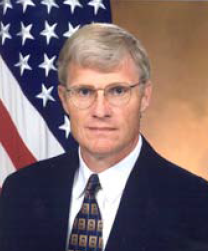[SatNews] "However, instability and effects of the Budget Control Act and the near-term lack of balance between force structure, readiness and modernization will increase the risk to our future force."
WASHINGTON, March 27, 2014 - The 100,000 personnel that make up the Defense Department's science and technology workforce have made remarkable achievements in the past, but that workforce is now showing the early signs of stress, the department's chief technology officer said yesterday.
At a hearing of the House Armed Services Committee's Subcommittee on Intelligence, Emerging Threats and Capabilities, Alan Shaffer, the acting assistant defense secretary for research and engineering , said the effects of last year's furloughs and government shutdown, as well as the ripple effects of sequestration—such as restrictions on conference attendance and hiring slowdowns—have damaged the health of the workforce and the programs they execute.

Mr. Alan R. Shaffer, Acting - Assistant Secretary of Defense forResearch and Engineering
The department is just beginning to understand just how harmful these events have been, Shaffer said, adding that, while the department is addressing the challenges, they are still a concern.
"The fiscal year 2015 budget request for science and technology is relatively stable," he said. The DOD science and technology request for fiscal year 2015 is $11.5 billion, the assistant secretary said, noting that the request is a 4 percent decrease from fiscal year 2014's request of $12 billion.
"While we continue to execute a balanced program, there are factors that led [Defense Secretary Chuck Hagel] to conclude in his February 24 fiscal year 2015 budget rollout that the development and proliferation of more advanced military technologies by other nations means that we are entering an era where American dominance on the seas, in the skies and in space can no longer be taken for granted," Shaffer said.
Congressionally imposed budget reductions are driving cuts to the force size, he said, but since it will take several years to realize significant savings by shrinking the overall force, "readiness and/or modernization will pay a larger percentage of this reduction bill."
The nation's technological superiority is challenged by the increasingly sophisticated military capabilities that are rapidly emerging around the world, Shaffer said.
"Within a fiscally constrained environment, our modernization efforts are focused on the enablers that keep our military equipment technologically superior to the emerging threat," he said.
The department has adopted a strategy with three goals for research and engineering investment, Shaffer told the committee: mitigate new and emerging threat capabilities, affordably enable new or extended capabilities in existing and new platforms, and to develop technological surprise.
"We have a balanced program that is yielding significant innovation across the DOD," For example, Shaffer said, the Defense Advanced Research Projects Agency "continues to deliver new capabilities that will allow the DOD to stay technologically advanced ... but we're also seeing groundbreaking capability developments in the services and agencies."
While the past year has been challenging for the Defense Department's science and technology programs, the department as a whole recognizes the need to maintain technological superiority as a cornerstone of the future force, Shaffer said.
"We still have the best military, defense industrial base and laboratory and university research systems," he said. "However, instability and effects of the Budget Control Act and the near-term lack of balance between force structure, readiness and modernization will increase the risk to our future force."
By Claudette Roulo
American Forces Press Service

